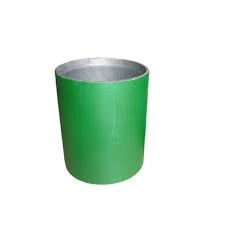- Afrikaans
- Albanian
- Amharic
- Arabic
- Armenian
- Azerbaijani
- Basque
- Belarusian
- Bengali
- Bosnian
- Bulgarian
- Catalan
- Cebuano
- Corsican
- Croatian
- Czech
- Danish
- Dutch
- English
- Esperanto
- Estonian
- Finnish
- French
- Frisian
- Galician
- Georgian
- German
- Greek
- Gujarati
- Haitian Creole
- hausa
- hawaiian
- Hebrew
- Hindi
- Miao
- Hungarian
- Icelandic
- igbo
- Indonesian
- irish
- Italian
- Japanese
- Javanese
- Kannada
- kazakh
- Khmer
- Rwandese
- Korean
- Kurdish
- Kyrgyz
- Lao
- Latin
- Latvian
- Lithuanian
- Luxembourgish
- Macedonian
- Malgashi
- Malay
- Malayalam
- Maltese
- Maori
- Marathi
- Mongolian
- Myanmar
- Nepali
- Norwegian
- Norwegian
- Occitan
- Pashto
- Persian
- Polish
- Portuguese
- Punjabi
- Romanian
- Russian
- Samoan
- Scottish Gaelic
- Serbian
- Sesotho
- Shona
- Sindhi
- Sinhala
- Slovak
- Slovenian
- Somali
- Spanish
- Sundanese
- Swahili
- Swedish
- Tagalog
- Tajik
- Tamil
- Tatar
- Telugu
- Thai
- Turkish
- Turkmen
- Ukrainian
- Urdu
- Uighur
- Uzbek
- Vietnamese
- Welsh
- Bantu
- Yiddish
- Yoruba
- Zulu
stainless steel reducer coupling
Understanding Stainless Steel Reducer Couplings
Stainless steel reducer couplings are essential components in piping systems used across various industries, including oil and gas, chemical manufacturing, and water treatment. These fittings are specifically designed to connect pipes of different diameters, facilitating the smooth flow of fluids and gases while maintaining pressure integrity. This article aims to provide a comprehensive understanding of stainless steel reducer couplings, their applications, benefits, and considerations when choosing the right product for your needs.
What is a Stainless Steel Reducer Coupling?
A stainless steel reducer coupling is a type of fitting that reduces the diameter of a pipe. It connects sections of differing sizes, allowing for a seamless transition from a larger pipe to a smaller one. These fittings can be designed as concentric or eccentric reducers, depending on the specific application requirements. Concentric reducers maintain the centerline of the pipe during the transition, while eccentric reducers are utilized in horizontal applications to ensure that the transition maintains a level fluid flow.
Stainless steel, known for its exceptional durability and resistance to corrosion, is the preferred material for manufacturing these couplings. It offers several grades, such as 304 and 316, which differ primarily in chemical composition. Grade 316 stainless steel is particularly recommended for more corrosive environments, such as marine applications, due to its higher resistance to saltwater.
Applications of Stainless Steel Reducer Couplings
The versatility of stainless steel reducer couplings makes them suitable for various applications. Some common utilizations include
1. Oil and Gas Industry These couplings play a crucial role in the transportation of crude oil and natural gas, connecting different pipeline sizes while enduring high pressures and harsh conditions.
2. Water Treatment Plants In these facilities, reducer couplings help manage water flow efficiently, adjusting pipe sizes to optimize the treatment process and maintain system integrity.
3. Chemical Processing The robust properties of stainless steel make these couplings ideal for handling aggressive chemicals and high temperatures, ensuring safe and reliable operations.
4. Food and Beverage Industry Stainless steel’s hygienic properties make it suitable for applications involving food processing and brewing, where contamination must be minimized.
5. HVAC Systems In heating, ventilation, and air conditioning systems, these fittings facilitate airflow management, connecting ducts of varying sizes and improving system efficiency.
Benefits of Using Stainless Steel Reducer Couplings
stainless steel reducer coupling

2. Strength and Durability Stainless steel couplings can withstand high pressures and mechanical stresses, making them ideal for high-performance applications.
3. Low Maintenance The durability of stainless steel significantly reduces the need for frequent replacements and maintenance, saving time and costs over the long term.
4. Hygienic Properties Stainless steel is non-reactive, preventing contamination of transported fluids, which is particularly vital in food processing and pharmaceutical applications.
5. Wide Temperature Range These couplings can operate effectively in both high and low-temperature environments, offering versatility in design and application.
Considerations When Choosing Reducer Couplings
When selecting stainless steel reducer couplings for your project, several factors should be considered
1. Material Grade Choose the appropriate grade of stainless steel based on the environmental conditions and chemical exposure. For instance, a marine environment may necessitate grade 316 stainless steel.
2. Size and Configuration Ensure that the reducer size matches your piping requirements. Consider whether a concentric or eccentric design is more suitable for your application.
3. Pressure Rating Evaluate the pressure requirements of your system to select couplings that can handle the operational demands.
4. Certification and Standards Ensure that the couplings meet industry standards and certifications, particularly for specialized applications like food and chemical processing.
5. Installation Requirements Consider the compatibility of the couplings with existing systems and the ease of installation to minimize downtime during implementation.
Conclusion
Stainless steel reducer couplings are indispensable in modern piping systems, offering a robust solution for connecting pipes of varying diameters. Their resilience against corrosion, high strength, and low maintenance make them an ideal choice across numerous industries. By understanding their applications and benefits, as well as carefully considering the selection criteria, you can ensure efficient and reliable piping operations in your projects.
-
Tubing Pup Joints: Essential Components for Oil and Gas OperationsNewsJul.10,2025
-
Pup Joints: Essential Components for Reliable Drilling OperationsNewsJul.10,2025
-
Pipe Couplings: Connecting Your World EfficientlyNewsJul.10,2025
-
Mastering Oilfield Operations with Quality Tubing and CasingNewsJul.10,2025
-
High-Quality Casing Couplings for Every NeedNewsJul.10,2025
-
Boost Your Drilling Efficiency with Premium Crossover Tools & Seating NipplesNewsJul.10,2025







